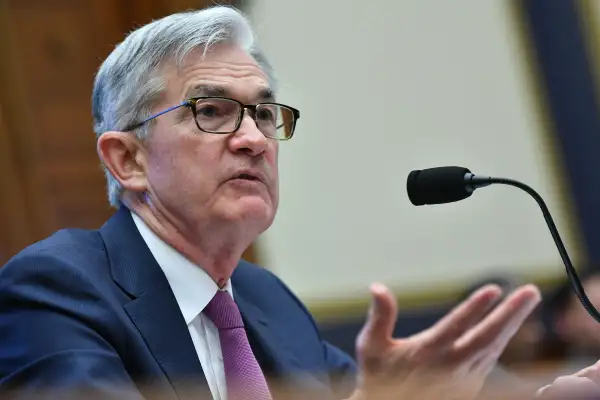The Fed Plans to Keep Interest Rates Near 0% Through 2022. Here's What That Means for Retirees
Money is not a client of any investment adviser featured on this page. The information provided on this page is for educational purposes only and is not intended as investment advice. Money does not offer advisory services.

The Federal Reserve announced Wednesday that it plans to keep interest rates at or near zero through 2022 — important news if you're retired or nearing retirement age.
While low rates are a boon for home buyers or homeowners looking to refinance a mortgage, an ultra-low interest-rate environment also means very low returns for Treasury bonds, the gold standard "safe haven" investment, as well as other fixed-income products in a typical retirement portfolio.
The upshot is that investors may have to think twice about the conventional investing wisdom, which suggests moving the bulk of their savings to bonds from stocks when they reach retirement age, say financial planners. That's despite the unpredictability of the stock market, which reacted to the Fed news by plunging 1,400 points on Thursday.
“People should still be invested in equities through retirement,” says Melville, N.Y.-financial planner Mitchell Goldberg. “Going into all cash or all fixed-income when you have 20 or 30 years might reduce your short-term volatility, but it raises your risk of inflation and longevity."
What stocks to own in retirement
“You need to stay invested in the market, but I think you need to be more cautious,” says Kelly Campbell, a financial planner in Alexandria, Va. As a rule of thumb, large-cap companies are more stable than small-cap companies. "I think a lot of small caps are going to have some difficulties going forward," Campbell says.
Scaling back your exposure to international markets — emerging markets in particular — also can help mitigate your risk, he adds. “I think there's too much risk overseas." Although the American economy is fighting to get its footing, the U.S. financial system is the safest bet out there, thanks to the extraordinary interventions undertaken by the Federal Reserve, according to Campbell. “Everybody’s having major difficulties, but we’re having less,” he says.
How much to invest in stocks in retirement
There's no one magic number as to the "right" percentage of your savings to keep in equities. For many years, the tried-and-true rule of thumb was 100 minus your age in stocks, so a retiree in his or her early seventies would have only about 30% of their assets in the stock market.
These days the average target-date fund — a barometer of what experts recommend for 401(k) investors — has about 40% in stocks for investors on the threshold of retirement, with some comfortably above 50%, according to Morningstar.
For a lot of investors, it will make sense to keep as much money in stocks as possible, unless you expect to need it sometime in the medium-to-near future. "People’s risk tolerance is first and foremost dictated by their time horizon. As people get closer to having to pay for their financial obligations, then it’s prudent to reduce their stock holdings," Goldberg says.
The danger is that if you have to take required distributions in a falling market, you'll have to sell more of your holdings to hit the same dollar amount. Then when the market goes up, you miss out on the ability to recoup those losses because the money has already been disbursed.
One workaround is to increase the amount of cash you hold in your retirement account so you won't have to liquidate stocks at a loss in order to satisfy required minimum distribution requirements. "It’s prudent for any retiree to have at least six to 12 months of financial obligations in the bank," Goldberg says.
More from Money:
This is How Much Money You Should Have in Stocks — at Every Age

